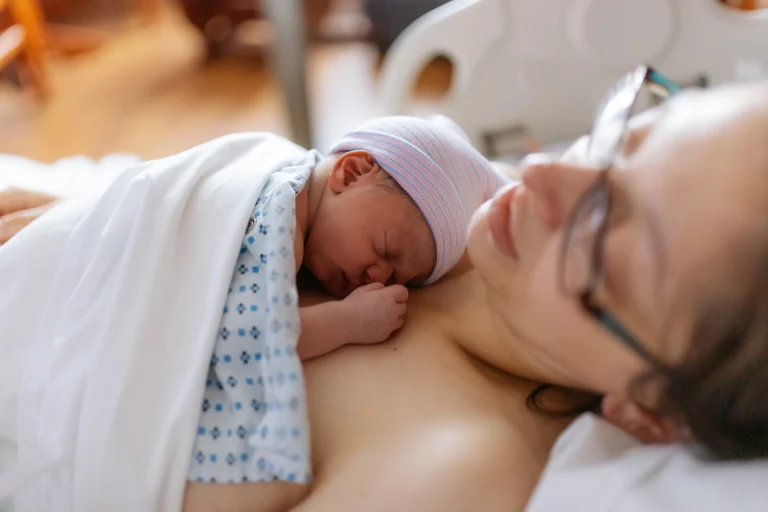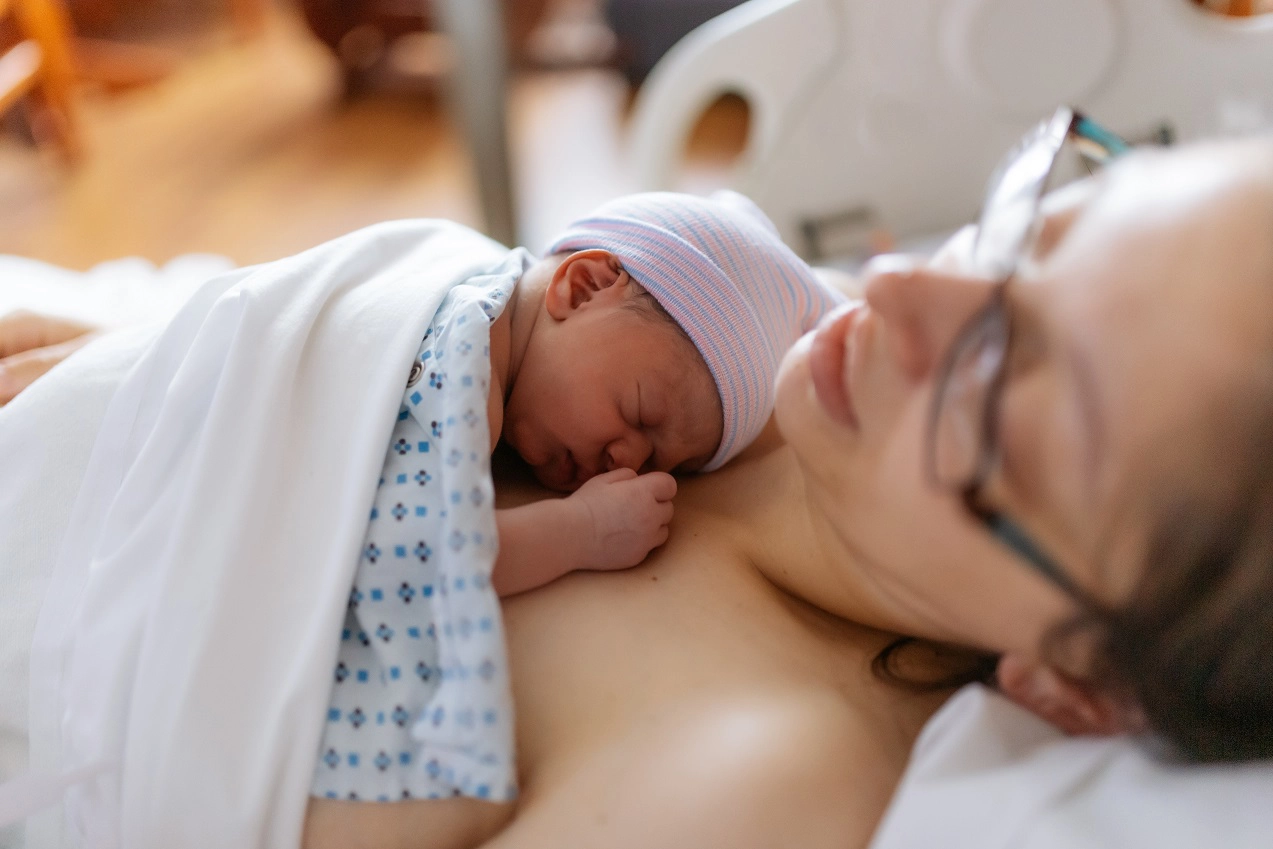Many women mistakenly believe that, unlike natural childbirth, bleeding after a cesarean section does not occur. Like after natural childbirth, the endometrium also needs to regenerate after surgery. How long does it take to bleed after a C-section?
Bleeding after cesarean section-why does it occur?
Bleeding after childbirth is due to the need to regenerate the endometrium. This is because during pregnancy, the placenta is implanted there, which after delivery, in III. period of labor or after the baby is extracted during a section, it separates and leaves a kind of “wound.” In turn, she needs to heal, which manifests itself in puerperal feces. Initially, they are in the nature of bleeding, but over time the nature of the feces changes. Regardless of the route of delivery, the uterine cavity must cleanse and regenerate during the postpartum period.
Bleeding after cesarean section-how long does it last?
Puerperal feces can appear up to 4-6 weeks after delivery. In many cases they pass after about 2 weeks, but this is an individual issue. It is worth realizing how their character changes over time. Initially they are blood-colored, then the color of the feces fades, becoming brown, then yellow until finally colorless/gray.
Bleeding after cesarean section-when should it cause concern?
Bleeding after a cesarean section should subside with each passing day. Heavy bleeding is always a cause for concern and requires medical consultation. This is because it can result from incomplete separation of the placenta and leaving fetal membranes in the uterine cavity. It may require intervention in the form of a curettage of the uterine cavity in the hospital. Also of concern should be a sudden change in the nature of the feces, for example, they have become pale, and suddenly there is profuse bleeding, or the smell of the discharge has changed. This may be related to an infection, for example. In such a situation, too, a visit to the attending physician or the gynecological and obstetric emergency room is necessary.
Bleeding after cesarean section-hygiene in the postpartum period
Postpartum time requires special attention to hygiene. In the case of a cesarean section, care should be taken for the wound after surgery, while after a natural childbirth, care should be taken for a possible perineal suture wound. It is very important for women to avoid baths and visits to the pool for 6-8 weeks. Cohabitation is also not advisable. Wash suture wounds with soap and water and dry with a disposable towel. Do not use body sponges, as they are a source of microorganisms. In the case of bleeding after a cesarean section, tampons should not be used, but sanitary pads should be changed often enough to prevent bacterial growth.
Rate this article:











